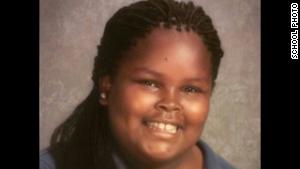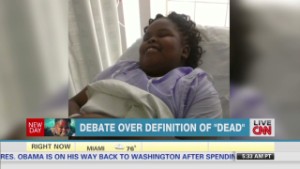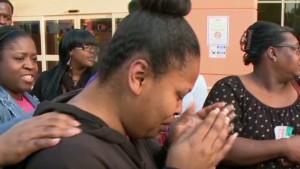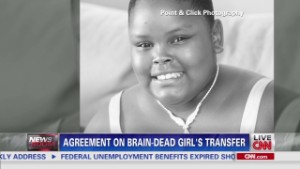किसी व्यक्ति की मौत और उसके ब्रेन डेड घोषित होने में कोई फर्क नहीं है भले ऊपर से यह प्रतीति हो कि व्यक्ति जीवित है ,सांस भले चलती दिखे ,भले ये आभास हो सांस की धौंकनी चालू है ,चमड़ी भले कुछ गर्माहट लिए महसूस हो स्पर्श करने पर लेकिन चिकित्सा शब्दावली में माहिरों की राय में मस्तिष्क का प्रकार्य संपन्न होने पर ,पूरी तरह चुक जाने पर जीवन का कोई अवशेष शेष नहीं रह जाता है। इतना होने पर भी जीवन की प्रतीति होना महज़ भ्रान्ति है अज्ञान है मोह है।
अनभिज्ञ व्यक्ति (जन साधारण ),जो चिकित्सा विज्ञान का माहिर नहीं है 'कोमा ' और 'ब्रेन डेड 'को एक ही बात समझ सकता है। लेकिन चिकित्सा विज्ञान में इनका अर्थ एक दम से अलग अलग है।
प्राय : गम्भीर बीमारी या चोट से उत्पन्न लम्बी अवधि की अचेतन -अवस्था है ,गहरी मूर्छा (comatose)है कोमा .कई मरतबा डॉ खुद मरीज़ को कोमा में लाते है गहरी निद्रा में ले जाते हैं ताकि दिमाग को चोट से उबरने स्वास्थ्य लाभ करने का मौक़ा मिल जाए। अमूमन चंद हफ़्तों से ज्यादा अवधि नहीं होती है इस गहन निद्रा जैसी स्थिति की।
अलबता मरीज़ इस स्थिति से बाहर निकल भी आता है और चिरस्थाई तौर पर सतत इस स्थावर सी स्थिति में बना भी रह सकता है। उच्च बोध - संबंधी ,संज्ञानात्मक प्रकार्य दिमाग का इस स्थिति में समाप्त प्राय : हो जाता है ,भले दिमाग कुछ प्रकार्य प्रदर्शित करता रहे। मरीज़ भले इस स्थिति में यदा कदा आँख भी खोल सकता है लेकिन न तो वह बोल सकता है और न ही कुछ करने को यदि उससे कहा जाए तो उसे समझ कर उस पर वह कोई प्रतिक्रिया ही कर सकता है। माहिरों के अनुसार कुछ मरीज़ इस स्थिति से बाहर भी निकल आते है।
लेकिन ब्रेन डेथ इस सबसे अलग है
क्या कहता है यूनिफॉर्म डिटर्मिनेशन आफ डेथ एक्ट ?
इस एक्ट के अनुसार -
(१)जब रक्त संचरण और श्वशन रुक जाएं हमेशा हमेशा के लिए यानी आखिरी तौर पर अ -परिवर्त्य तौर पर (जिसे बदला न जा सके फिर से चालू न किया जा सके ,यानी अन -उत्क्रमणीय तौर पर )
(२) अ -परिवर्त्य तौर पर मष्तिष्क के भी सभी प्रकार्य समाप्त हो जाए ,ब्रेन स्टेम सहित।
तब व्यक्ति को आखिरी तौर पर मृत मान लिया जाएगा। ब्रेन डेथ घोषित कर दिया जाएगा ऐसा व्यक्ति।
इसका मतलब यह है हमारा दिमाग जो एक पेचीला तंत्र है इस स्थिति में किसी भी विध व्यक्ति के किसी काम नहीं आ पाता है।
दिमाग के दो हिस्से हैं : लोवर तथा अपर
लोवर ब्रेन तात्कालिक तौर सांस को चालए रहता है ,दिल को धड़काये रहता है रिफलेक्सीज (प्रतिवर्ती क्रिया ,आवश्यकता के समय तुरंत सक्रीय हो जाने की क्रिया जैसे गर्म चीज़ पे से हाथ का हट जाना आदि ,बॉडी टेम्प्रेचर तथा निद्रा जागरण चक्र सरकाडिय़न रिद्म का विनियमन करता है।
जबकि अपर ब्रेन स्नायुविक तंत्र के उच्चतर प्रकार्यों को संपन्न करता है। हमारी ज्ञाननेद्रियों स्पर्षेंद्रियों का स्वामी है।
ब्रेन डेथ का मतलब दोनों हिस्सों का काम करना बंद कर देना है । बॉडी का कमांड सिस्टम अब कोई कमांड नहीं लेता है।जबकि पूर्व में यही स्नायुविक तंत्र का स्वामी था।
भले दिल धड़कता रहे इसका कोई मतलब नहीं रह जाता है अब। जन साधारण इस स्थिति को समझ नहीं पाता है। जैसे जीव का काया से मोह हो जाता है खुद को देह मानते मानते यही उस साधारण जन के साथ होता है जो दिल के धड़कने को जीवन मान लेता है।
ब्रेन फंक्शन ही शरीर को चलाता है इसके बिना सब रुक जाता है जब तक के बाहरी उपायों से उसे चलाये न रखा जाए। वेंटिलेटर पर रखा हुआ व्यक्ति खुद सांस नहीं ले रहा है। दिल अमूमन ७२ घंटों के बाद थम जाता है लेकिन कभी कभार ऐसा हफ्ता दस दिन तक भी होता रह सकता है।
२०१० में अमरीकी अकादेमी आफ न्यूरोलॉजी ने बा -कायदा गाइड लाइंस सशोधन के साथ ज़ारी की हुई हैं जिसके तहत तकरीबन २५ परीक्षों के बाद यह सुनिश्चित कर लिया जाता है कि व्यक्ति मर चुका है ब्रेन डेथ यानी मृत्यु हो चुकी है उसकी। इन निर्देशों का पालन किया जाना चाहिए किसी भी घोषणा से पहले।
Why brain dead means really dead
January 7, 2014 -- Updated 0703 GMT (1503 HKT)
(CNN) -- A person who is brain dead may appear alive -- there may be a heartbeat, they may look like they're breathing, their skin may still be warm to the touch.
But doctors say there is no life when brain activity ceases.
Doctors in Oakland, California, declared 13-year-old Jahi McMath to be brain dead on December 12, three days after she underwent a tonsillectomy and adenoidectomy. The McMath family fought in court to keep the teen on a ventilator, and announced Monday that they had moved the girl to another care facility.
While family attorney Christopher Dolan told reporters that for her safety, Jahi's destination won't be announced, a New York facility said Sunday it was ready to accept her.
"We are aware of Jahi McMath's dire situation, and we are willing to open our outpatient facility to provide 24-hour care," said Allyson Scerri, founder of New Beginnings Community Center in Medford, New York. "Her brain needs time to heal."
"This child has been defined as a deceased person yet she has all the functional attributes of a living person despite her brain injury," the center said on its website.
However, barring a misdiagnosis, medical experts say the teen will not recover if she is truly "brain dead."
While laymen tend to use the words "coma" and "brain dead" interchangeably, in medicine they mean very different things.
"Coma" is the broader term used to describe a prolonged state of unconsciousness, according to the Mayo Clinic.
Outwardly, it resembles sleep. Doctors may sometimes purposefully put a patient into a coma to give the brain time to heal. Comas rarely last longer than a couple of weeks, according to the clinic; patients can fully regain consciousness or may transition from a coma into a persistent vegetative state.
Someone in a persistent vegetative state has lost most higher cognitive function, but his or her brain shows some activity. The patient may open their eyes or exhibit small movements, but cannot speak or respond to commands, according to the National Institutes of Health. Some patients can recover from this state, according to the NIH.
Both these situations are different from brain death: According to the Uniform Determination of Death Act, an individual is dead when he or she "has sustained either (1) irreversible cessation of circulatory and respiratory functions, or (2) irreversible cessation of all functions of the entire brain, including the brain stem."
What that essentially means is that the brain, an extremely complex organ, no longer helps the patient function.
The human brain is divided into what doctors call the Lower Brain and the Upper Brain.
The Lower Brain -- where the top of the spinal cord goes up through our necks and into our brains -- regulates body functions such as spontaneous breath, reflexes, our heartbeat, body temperature and sleep/wake cycles.
The Upper Brain is behind all the "higher" functions in a person's nervous system. This gives us the ability to use our senses -- to see, taste, smell, hear and feel.
"Brain death" means both the upper and lower part of the brain are not functioning. That command center of the body that regulates the central nervous system is unable to perform. However, some function, such as a heartbeat, may linger.
"It's a little difficult for a layperson to understand how a person is dead if the heart is still beating," said Dr. Panayiotis Varelas, director of the neurosciences intensive care service at Detroit's Henry Ford Hospital.
But without brain function, the body eventually shuts down, unless there is medical intervention. Someone on a ventilator may appear to be breathing, but cannot breathe on their own.
While the heart usually stops within 72 hours, it could continue beating for "a week or so," Varelas said.
Jahi's mother, Nailah Winkfield, has said, "I would probably need for my child's heart to stop to show me that she was dead. Her heart is still beating, so there's still life there."
The term "brain dead" can be misleading, said Cynda Hylton Rushton, professor of clinical ethics at Johns Hopkins University, because it sounds like a person really isn't dead. If someone dies of a heart attack, doctors don't say they're "cardiovascular dead," for example.
Doctors should be more transparent about the finality of brain death, said Arthur Caplan, director of the Division of Medical Ethics at NYU Langone Medical Center.
Terms such as "mechanical support" or "artificial machine support" should be used to refer to sustaining the functioning of a brain dead person, he said. "No one wants to take away 'life support.'"
"Dead is dead," agreed neurologist Dr. Richard Senelick in The Atlantic. "Brain death isn't a different type of death, and patients who meet the criteria of brain death are legally dead."
The American Academy of Neurology updated its brain death guidelines for adults in 2010, asking doctors to follow a step-by-step checklist of some 25 tests.
All criteria in the guidelines must be met before a person can be considered brain dead; however, the legal definition of brain death can vary from state to state.
The American Academy of Pediatrics added to those guidelines for children. These childrens' guidelines advise there should be two attending physicians involved in the care of the child, and they should make separate examinations separated by an observation period.
Both must determine the child is brain dead. In making that ruling, the doctors use the currently established criteria; there must not be a conflict of interest.
"No one who has met the criteria for brain death has ever survived," Senelick said. "No one."






बहुत सुंदर जानकारी !
जवाब देंहटाएंबहुत अच्छी जानकारी देती पोस्ट !
जवाब देंहटाएंनई पोस्ट सर्दी का मौसम!
नई पोस्ट लघु कथा